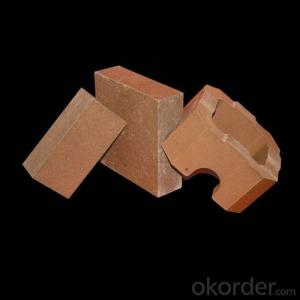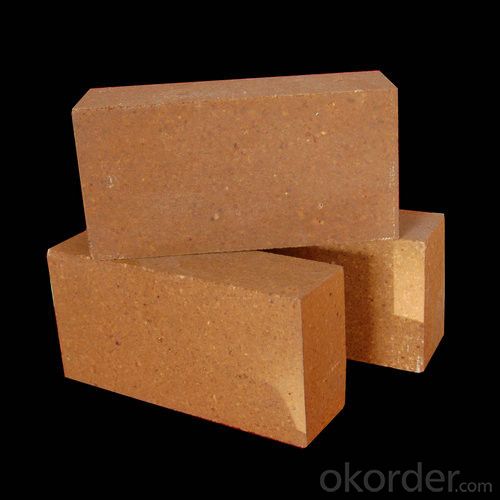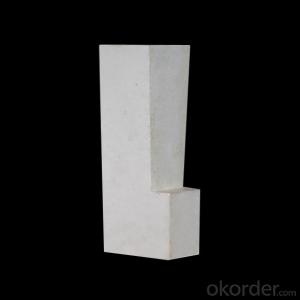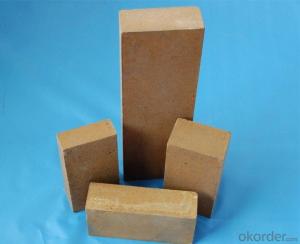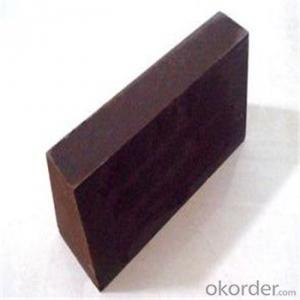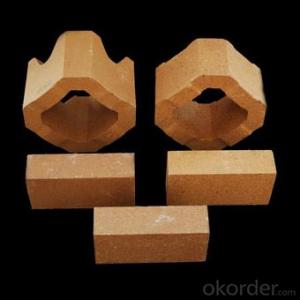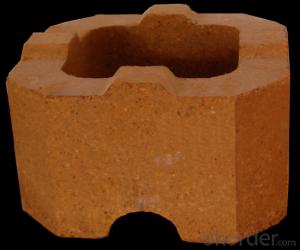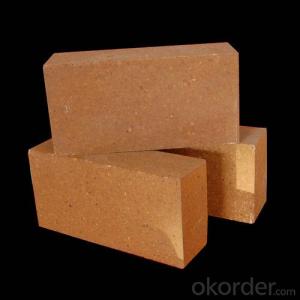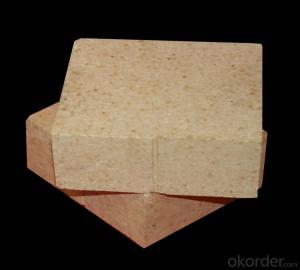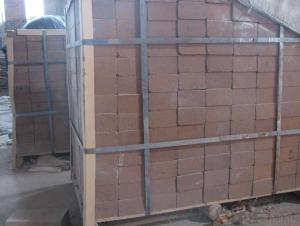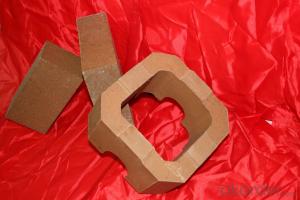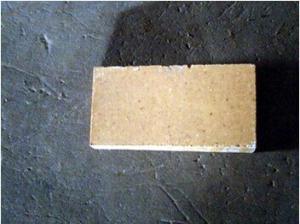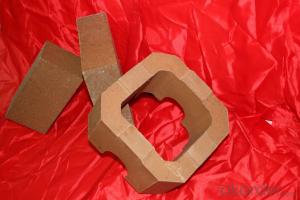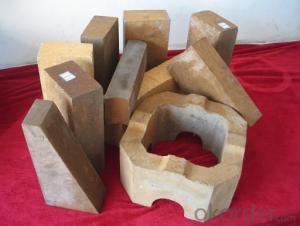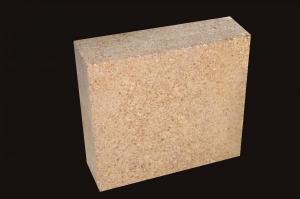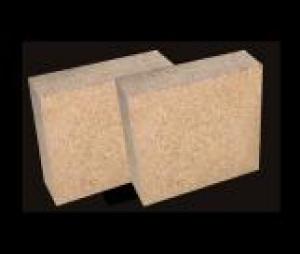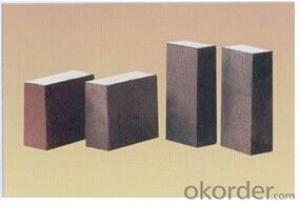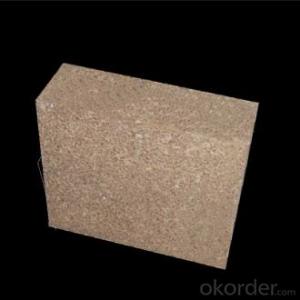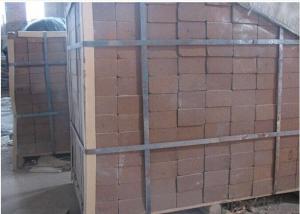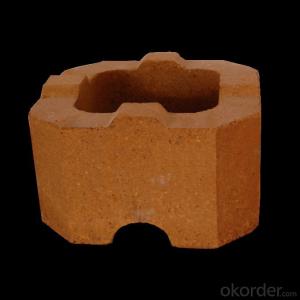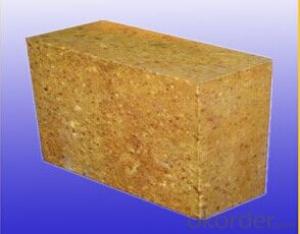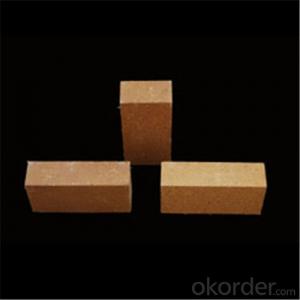Magnesite Alumina Spinel Brick for Upper and Lower Transition Zone
- Loading Port:
- Tianjin
- Payment Terms:
- TT OR LC
- Min Order Qty:
- 10 m.t.
- Supply Capability:
- 10000000 m.t./month
OKorder Service Pledge
OKorder Financial Service
You Might Also Like
Magnesia alumina spinel brick is a kind of basic refractory material which is manufactured by using magnesia and little industrial alumina oxide or bauxite as raw materials. The thermal shock resistance of magnesia alumina brick is better than that of magnesia bricks, and the refractoriness is above 1580°C, with high corrosion resistance to basic melting slag. It is mainly applied to the top of steel making open-hearth furnace and EAF, high temperature tunnel kiln, large-scale cement rotary kiln and non-ferrous metal smelting furnaces, etc.
Feature of Magnesite Brick
Good high-temperature performance
High thermal shock resistance
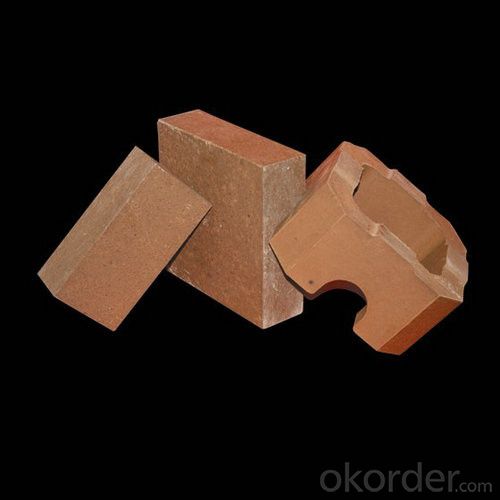
Application of Magnesite Brick
Open hearth futnace
Non-ferrous furnace
FAQ
Q4: What is the minimum quantity?
A4: There is no minimum order quantity. Depending on the item and processing, there may be a minimum production required, however we can offer a quotation based only on the quantity you need.
Q5: Can you give me a brief introduction of the application of your products?
A5: CNBM (China National Building Material) core refractory business comprises the production, sale and installation of high-grade refractory products, the development and implementation of customized system solutions as well as rendering outstanding services for the key industries in Glass, Iron& Steel, Petrochemical, Cement, Ceramic and Nonferrous Metals.
- Q: What is the ratio of magnesia refractory bricks to brine? For example, what is the difference between the 97 and 95 with 92 brick brick brick material mixed with brine ratio?
- Different grades of burned magnesia brick is mainly made of magnesia binder with different taste, there is not a big difference. However, the physical and chemical properties of binders should be controlled well!
- Q: Brick price?
- Refractory brick series sintered magnesia brick, magnesia chrome brick, magnesia brick, magnesia spinel brick, magnesia calcium brick, unburned magnesia chrome brick, magnesia brick, magnesia calcium brick, magnesia brick, and al2o3-mgo-c bricks.
- Q: The index of magnesia brick
- Room temperature compressive strength≥(MPa)(15-25-)24.5-24.5-24.5-24.5-40-40-40
- Q: High purity magnesia brick masonry mortar for what?
- High purity aluminum is 99.99, the first is not pollution, the stove is high magnesia brick masonry, 95% and 97% purity magnesia brick is for a long time did not find a good bit of fireclay, do not know what to build, now used light burned US powder and heavy burned magnesium plus brine built, with 2 months a griddle doesn't stick on magnesium brick, a touch off, there is no good sintering
- Q: Refractory brick, high alumina brick, magnesia chrome brick, magnesia brick, clay brick, which type of high temperature refractory brick?
- The super high alumina brick in high alumina refractory brick has the highest refractoriness, and the corresponding production cost is higher.
- Q: With different capacitance magnesia brick brick
- It has good thermal stability, corrosion resistance and spalling resistance. Widely used in converter, arc furnace and other industrial furnace lining refractory.
- Q: Magnesia brick
- Magnesia brick (magnesite brick) basic refractories Magnesium Oxide content of more than 90%, with the main crystalline phase of periclase. General can be divided into sintered magnesia brick (also called burnt magnesia brick) and chemically bonded magnesia brick (also known as the two major categories of not burned magnesia brick). Purity and high firing temperature of magnesia, due to the direct contact of periclase grains, known as direct bonded magnesite brick; made of fused magnesia bricks called electrically fused magnesite brick.
- Q: How to identify the fused magnesia brick and sintered magnesia brick
- Magnesia brick have high refractoriness, alkali slag good performance, high load softening temperature, but poor thermal shock resistance. The sintering magnesia brick brick magnesite as raw material, crushing, proportioning, mixing, forming, in 1550 ~ 1600 degrees firing, high purity products firing temperature is over 1750 DEG C. Don't add chemical bond magnesia brick is appropriate in magnesia, through mixing, molding and drying.
- Q: Process for producing magnesia chrome brick
- The fine powder compacts after calcination produced by magnesia - chrome ore grinding method, brick with magnesia coarse particles, are effective measures to eliminate the effect of loose. Compared with the common magnesia chrome brick, the magnesia chrome brick made by this method has lower porosity, higher compressive strength, higher softening temperature and higher flexural strength. Compacts with chrome magnesite powder, magnesia chrome brick by synthetic magnesia chrome sand made of high-temperature calcination, slag resistance and high temperature strength are better than other magnesite chrome brick.
- Q: How do you differentiate between the two clearly? Where is the key? Thank you
- Magnesia brick (magnesite brick) basic refractories Magnesium Oxide content of more than 90%, with the main crystalline phase of periclaseGeneral can be divided into sintered magnesia brick (also called burnt magnesia brick) and chemically bonded magnesia brick (also known as the two major categories of not burned magnesia brick). Purity and high firing temperature of magnesia, due to the direct contact of periclase grains, known as direct bonded magnesite brick; made of fused magnesia bricks called electrically fused magnesite brick.
Send your message to us
Magnesite Alumina Spinel Brick for Upper and Lower Transition Zone
- Loading Port:
- Tianjin
- Payment Terms:
- TT OR LC
- Min Order Qty:
- 10 m.t.
- Supply Capability:
- 10000000 m.t./month
OKorder Service Pledge
OKorder Financial Service
Similar products
Hot products
Hot Searches
Related keywords
